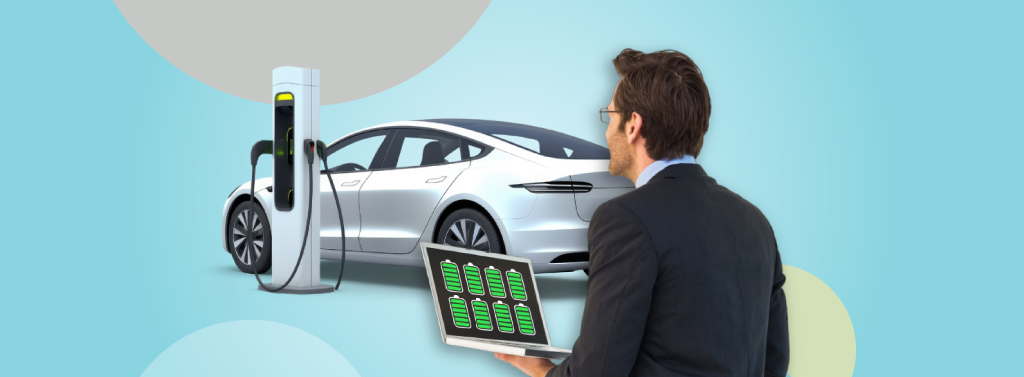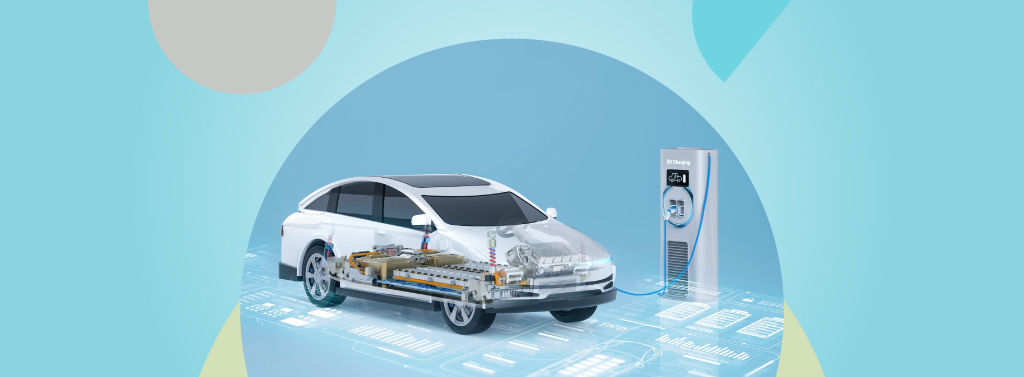-

Understanding Combustion Phenomena and Thermal Runaway in Lithium-ion Batteries
Lithium-ion batteries have gained a significant presence among large-format batteries. They are extensively used in airplanes, electric vehicles, and energy storage systems. However, there are risks of thermal runaway in lithium-ion batteries along with combustion phenomena, just like the other electrochemical systems batteries. Thermal runaway (TR) is the most dangerous event in a lithium-ion cell.…
-

Cell Balancing in BMS: Understanding Its Importance in Electric Vehicle Battery Packs
The battery management system maintains voltage levels within cell modules during charging and discharging. However, managing such a system is challenging due to the unique qualities of each cell, including capacity, temperature, state of charge (SoC), and other attributes. Even a small fluctuation can result in low voltage, subpar battery performance, and a shorter lifespan. …
-

Eco-Friendly Future of EV Battery Tech: Will Lithium-Sulfur Replace Lithium-ion?
While Lithium-ion batteries (LIBs) have been a popular choice for electric vehicles (EVs), their limitations are driving the search for better solutions in the EV battery segment. Rising costs, concerns about raw material availability, and a desire for even higher performance are mainly driving this exploration of alternative battery chemistries and systems. One promising alternative…
-

Optimal Cell Balancing in BMS: Reviewing Key Techniques for Battery Optimization
Introduction The concept of cell balancing in battery management systems (BMS) ensures that the energy distribution among the cells is balanced, allowing a greater percentage of the battery’s energy to be recovered. This is especially important for long battery strings that are used in scenarios that frequently require recycling. As per Grand View Research estimates, …
-

Environmental Impact of Batteries: Emerging Mitigation Approaches
Introduction Against the dangers of climate change, batteries power our clean energy dreams. But at the same time, they come with a hidden environmental cost. It’s time to address this before it undermines our progress. For instance, it is estimated that each kilowatt-hour (kWh) of batteries produced generates between 150 to 200 kilograms of CO2. …
-

Role of Battery Data Analysis in Accelerating Battery R&D
Battery Research and Development (R&D) is a crucial area of innovation, especially in the field of electrochemical energy storage. However, accelerating the commercialization of new battery technologies requires advancements at the R&D level. A major challenge faced by scientists, engineers, and technicians in this field is battery data management. For example, labs may test hundreds…
-

Electric Vehicle Landscape in 2024: Assessing China’s Influence, US Policies, and Challenges in Europe
As we stand on the precipice of a new era in transportation, the global electric vehicle landscape is undergoing a seismic shift. The EV industry is not just about the vehicles themselves but also the intricate ecosystem of technology, policy, and innovation that supports them. When it comes to electric vehicle patents and production, China,…
-

Analysing the Impact of Battery Life Cycle Assessment on Environment
The global demand for lithium-ion battery cells is expected to surge from 700 gigawatt-hours in 2022 to 4,700 gigawatt-hours by 2030. China and Europe are expected to lead in demand, particularly in the electric mobility industry. Yet, the average lifespan of these batteries remains relatively short, leading to massive amounts of electronic waste. Have you…
-

How Predictive Battery Performance is Advancing the Battery Research
The merging of machine learning and battery research is reshaping how we perceive battery performance and longevity while also leaving a profound mark on patent trends. In 2022, about 60% of lithium, 30% of cobalt, and 10% of nickel demand was for EV batteries. Just five years earlier, in 2017, these shares were around 15%,…
-

Decoding the Innovations in EV Battery Performance Optimization Through Intelligent BMS Technology
Electric vehicles (EVs) are gaining popularity in global transportation due to their potential to reduce greenhouse gas emissions, improve energy efficiency, and lower operating costs. A battery management system (BMS technology) regulates the behavior and condition of the battery, which is a critical component that impacts the efficiency and uptake of electric vehicles. With a…